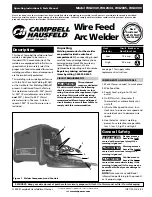
Q: Does a wireless camera require power?
A:
Yes. Wireless cameras require two power sources: one connected to the camera, and
the other to the receiver. The term "wireless" refers to the lack of a video cable between
the camera and the receiver.
Q: How far can a wireless camera transmit a video signal?
A:
In an open field (with line of sight), a typical wireless camera has a range between 250 -
500 feet. 'Line-of-sight' means that there are no obstructions between the camera and re-
ceiver. Obstructions include walls, buildings, trees, and certain electronic devices. Materi-
als containing moisture (for example, leaves) may also act as an obstruction. Cubical walls,
drywall, glass, and windows generally do not degrade wireless signal strength.
In a closed environment—such as the interior of a house—the wireless camera range is
between 100 - 165 feet. The signal range varies depending on the type of building materi-
als or objects the wireless signal must pass through.
The signal range also depends on whether there are competing signals using the same
frequency as the camera. For example, signals from cordless phones or routers may affect
signal strength. Adaptive Frequency Hopping Spread Spectrum (FHSS) technology fea-
tured in the latest Lorex models greatly reduces signal interference.
Range Limiting Factors
1
Reflection
Scattering
Refraction
Diffraction
Attenuation
The signal reflects
back
The signal scat-
ters back into mul-
tiple new signals
The signal bends
as it travels
through an object
(e.g. glass
window)
The signal
changes direction
as it passes
around an object
The signal
strength weakens
as it passes
through an object
NOTE
1.
Source: Xirrus (2010). "Wi-Fi Range Dynamics".
Signal Reduction Through Materials
Signal strength decreases as it passes through different types of material. The table below
shows how signals become reduced when passing through different materials:
Material
Signal Reduction (%)
Plaster & Wood
10 - 30%
Brick
30 - 50%
Concrete Cinder Blocks
50 - 70%
Metal & Metal Cladding
70 - 90%
NOTE
Signals that must pass through wet or moist materials (e.g. shrubs and trees) may be significantly
reduced.
#LX400077; r.43964/43966; en-US
61
Содержание LW2760 Series
Страница 1: ...USER S GUIDE LW2760 Series...
Страница 2: ......
Страница 3: ...USER S GUIDE LW2760 Series LX400077 r 43964 43966 en US iii...
Страница 71: ......






































